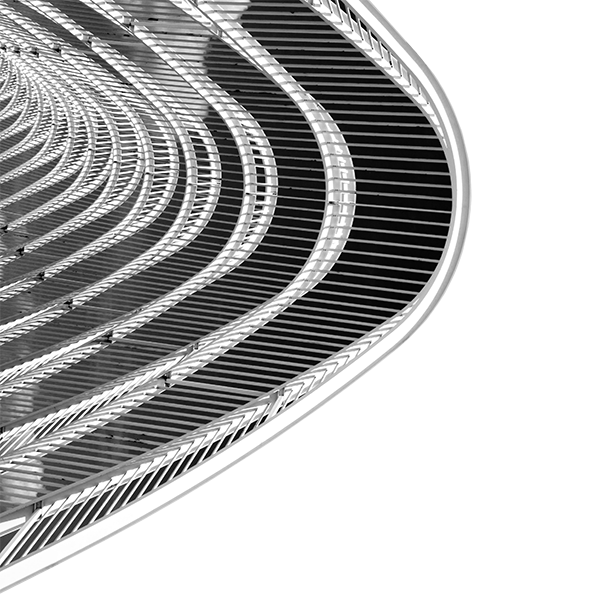Ansys and EMA Help Intel Achieve the Impossible: EMI Simulation of an Entire Server
Practicing patience can be hard for some of us, and that is why Intel is partnering with EMA to ensure it is closer to creating a fully functioning device before production begins.
Crammed into the small space of a server is a processor, memory, cables and of course the metal holding it all together. With all that equipment, the existence of electromagnetic interference (EMI) is almost a guarantee. EMI can cause products to run poorly, malfunction or just stop working all together.
With electronics getting smaller and smaller, it is getting harder to prevent EMI, especially on the first try. EMA along with Intel and Ansys are working on a new way to detect EMI earlier in order to eliminate the time and cost of creating prototypes.
Creating a product
It was in 2020 when Intel set a goal of being able to simulate the electromagnetic properties of an entire server all at the same time. In charge of the project, Principal Engineer Michael Leddige and Signal Integrity Engineer Cesar Mendez-Ruiz.
“Unlike signal integrity, where you can chop your problem into small pieces and analyze them and then paste all the pieces back together, EMI is by essence a system-level problem,” Mendez-Ruiz says.
When trying to figure out how to look at the system as a whole, Mendez-Ruiz reached out to EMA for use of its Ansys EMC Plus (formerly EMA3D® Cable) and Ansys for use of its HFSS and SIwave products.
Since Intel needed to look at six PCIE modules working in the same server, some parts of Ansys EMC Plus needed to be enhanced to work better with the HFSS and SIwave software. After the enhancements were made the team was able to get to work.
Results of the project
Saving time
Prior to changes in the software, Intel would have had to run the HFSS software six separate times, with each simulation taking one week to complete.
“The new software lets me apply linear transformations to the sensors to position them in the correct way, so I don’t have to simulate the same thing six times,” Mendez-Ruiz says.
Improving workflow
Project managers were able to improve workflow by exporting data from SIwave with one click right to the Ansys EMC Plus. Previously SIwave would simulate the electromagnetic near-field from printed circuit boards and packages. Ansys EMC Plus uses a voxel grid mesh instead of a tetrahedra grid resulting in a forgiving mesh. When the two are used together, projects can be completed much faster than before, saving Intel preparation time.
Accurate modeling
Changes in the software also led to more accurate modeling of the cables that connect printed circuit boards. Previously, engineers had to model every geometric feature of the cable. The wires can be less than a millimeter in diameter and are braided together in complex, twisting configurations that can greatly affect electromagnetic coupling. Ansys EMC Plus uses a voxel mesh grid and a solver based on multi-conductor transmission line theory for the cables.
“The EMA3D® tool handles the cabling like an independent simulation from the voxel grid meshing of the rest of the computer,” Mendez-Ruiz says.

PCIE module (top cover not shown) with sub-grid defined in heat sink area for smaller cell size only in this region
The simulation models a 2D cross section of the wire. The path of the cable lives in 3D geometry, showing a line where the cable goes and the 2D cross section reveals what is inside.
“Part of the challenge was to account for different scenarios — not only the twisting of cables inside a server but also different termination options,” Mendez-Ruiz says. “You don’t always terminate with only one resistor or one linear component. You can have different termination scenarios. You can also have some shielding from an open circuit, which can have huge implications on the performance of the compute system.”
Future of the project
Using this method, engineers can now simulate an entire server in hours or days, instead of what could have taken months or maybe even years.
Mendez-Ruiz says he and the team are in a good place and are now trying to develop an internal plan.
“The tool is there, but how do you use it? How do you set it up so you can replicate and correlate with measurements you make in the lab?” said Mendez-Ruiz.

Full 1U chassis shielding effectiveness evaluation setup exploiting the seam/joint capability to account for EM leakage through assembly gaps, using a harness as a monopole antenna source and a field probe 0.5m apart from front panel.
He says he will consider the project finished when the simulation software catches a problem in the design stage and solves it before a prototype is ever seen in a lab. He believes that could happen by the end of 2022.
“The impact of this joint program on Intel has been that we went from not being able to even consider simulating a whole server to now having something that is doable,” says Mendez-Ruiz. “It was a three-way effort and that’s what makes this story so compelling. Intel, Ansys, and EMA invested whatever effort was necessary to make it happen. It’s a big win for all of us.”
Learn more about what Ansys EMC Plus can do for you here.
If you’re interested in purchasing Ansys EMC Plus please contact Ansys here.

